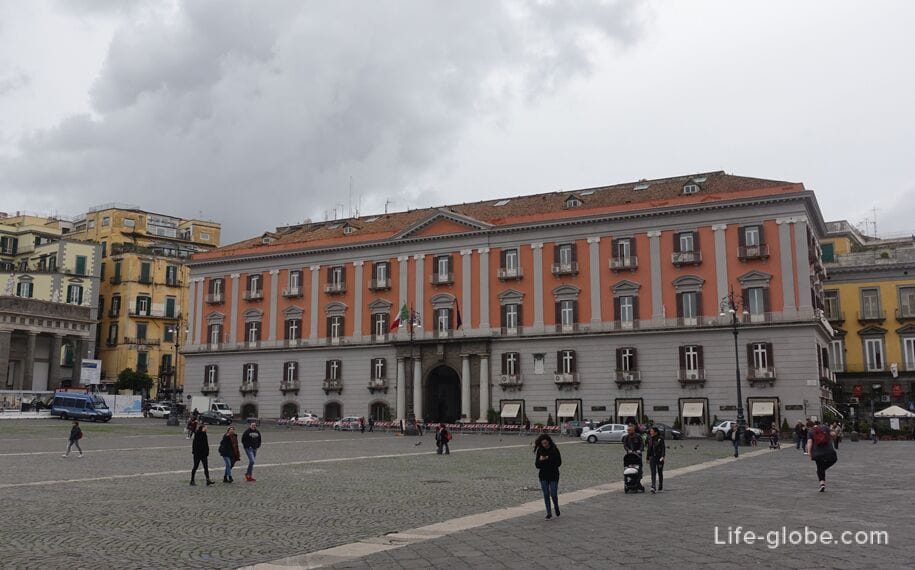
The Piazza Plebiscito or Piazza Plebiscito (Piazza del Plebiscito) is the largest square of Naples, located in the historical centre of the city, in the district of San Ferdinando, between the seafront and one of the main tourist streets of Naples - Toledo (Via Toledo).
Piazza del Plebiscito square, an area of about 25,000 square meters is used for holding major festivals, concerts, celebrations and other social events.
In the square, around the perimeter, concentrated monumental architectural objects that make up the spacious walking area and included in the Tops of the sights of Naples.
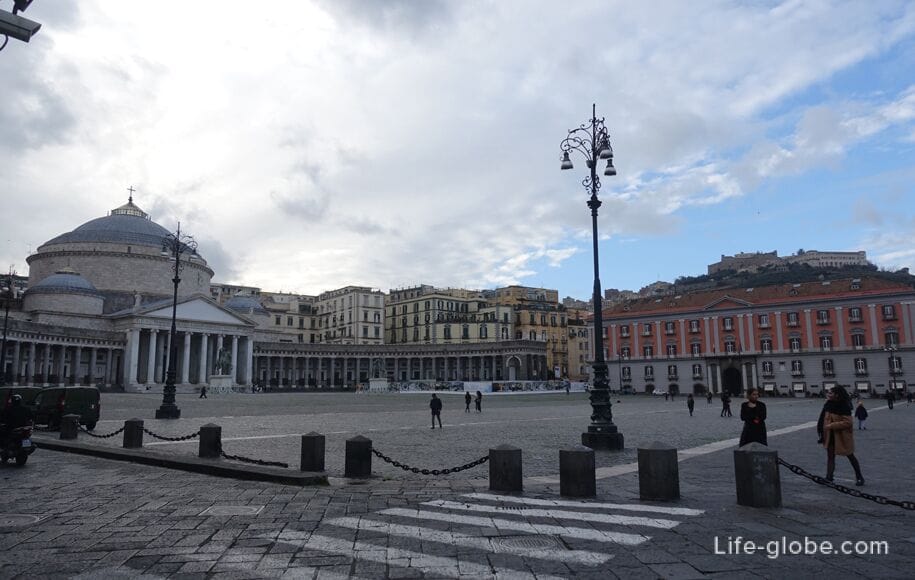
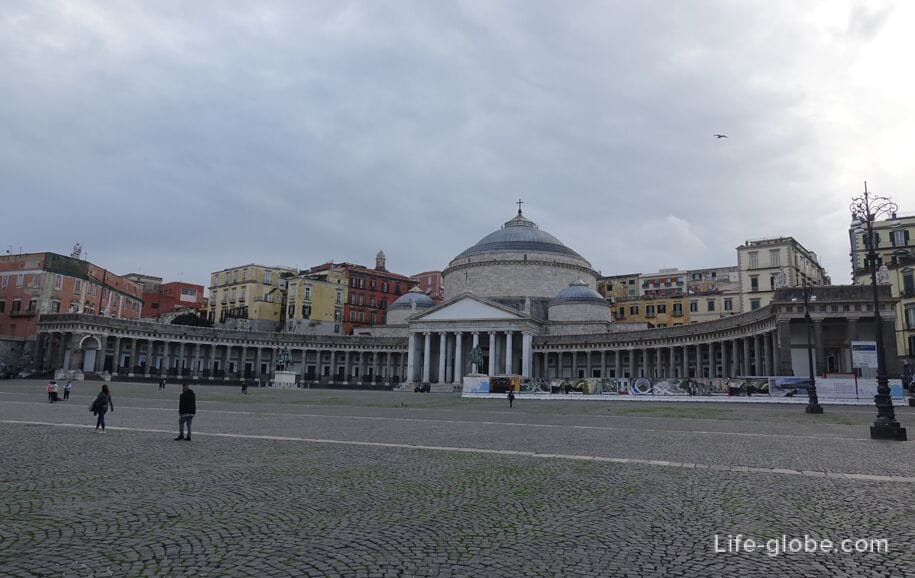
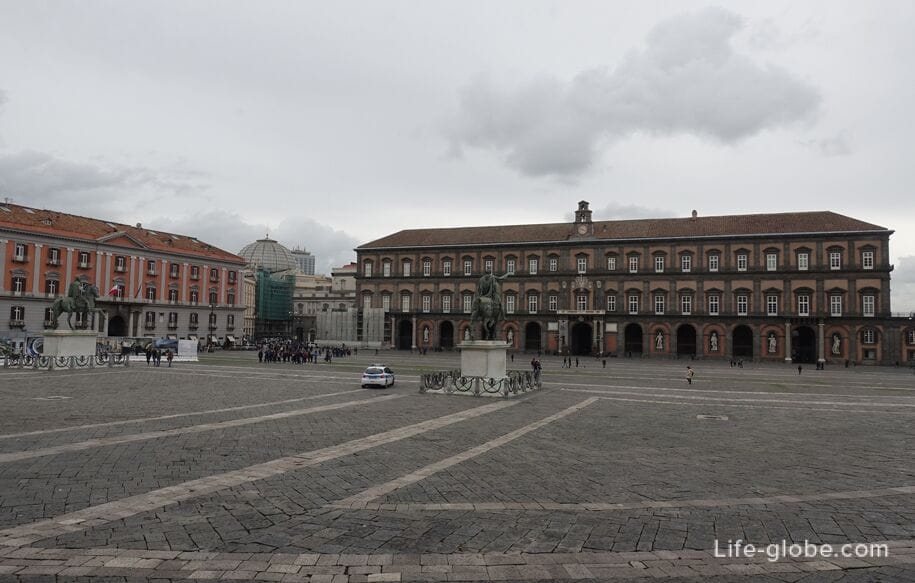
The open space on the site where today is Piazza Plebiscito, has existed for about 1543 the construction of the Palace Vicereale. However, only after the construction of the Royal Palace, which we can see to this day, began the history of Piazza Plebiscito.
Once construction of the Palazzo Reale was completed, an open space called "largo di Palazzo", quickly became a vital center of the city. The current name of the square of Plebiscito square received after October 21, 1860.
On one side of the square stands the Royal Palace (Palazzo Reale - Palazzo Reale di Napoli), the construction of which began in 1600 and lasted more than 50 years.
The length of the facade of the Palace is 169 meters. Now in the wings of the Palace hosted various institutions, the main part of the building since 1814 is the national library.
Also, the Palace is a Museum of the historical apartments of the Royal Palace, among areas which are: the Central hall, the Throne hall and the hall of Hercules. In the halls of the Museum exhibited works by such masters as Titian, Guercino, Andrea Vaccaro, Mattia Preti, Spagnoletto, Massimo Stanzione and Luca Giordano. The Museum entrance fee, 6 Euros.
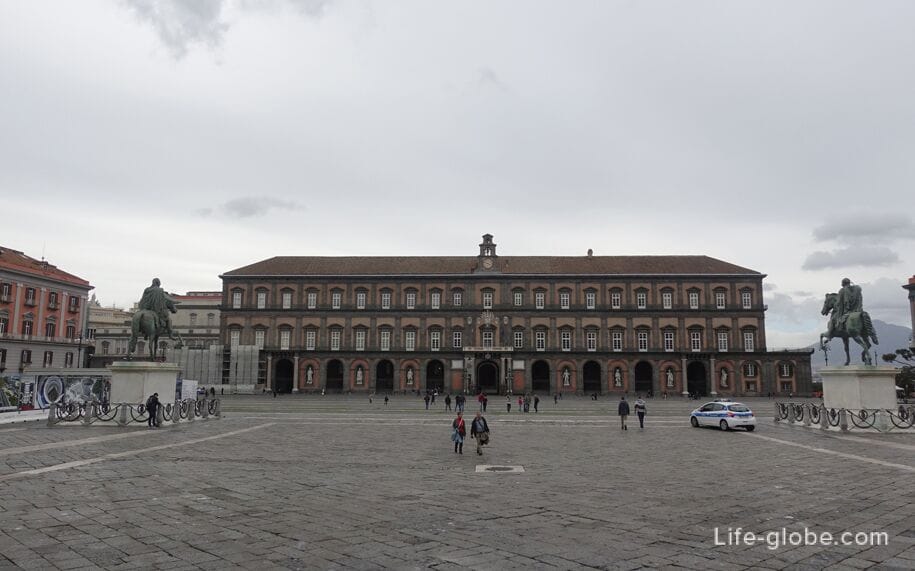

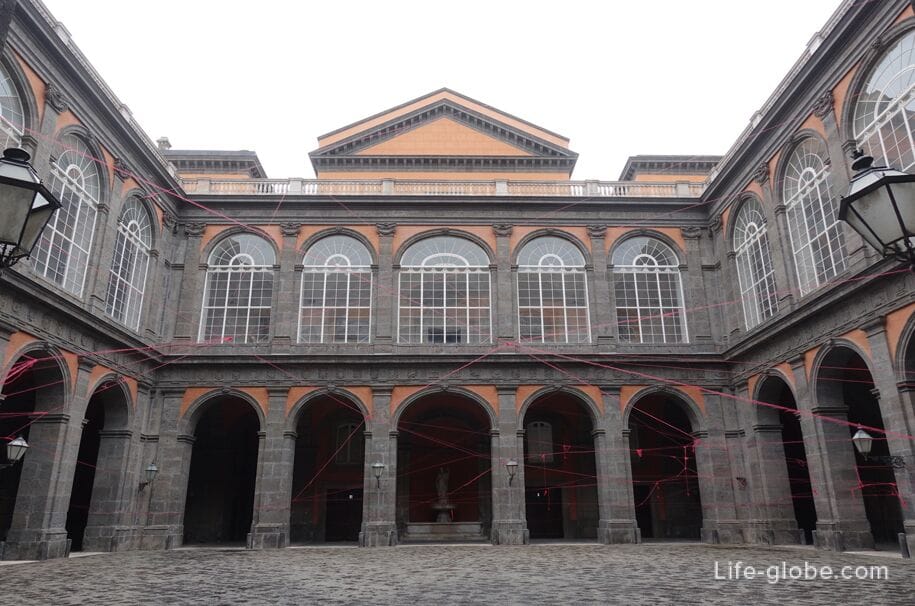
On the opposite, from the Royal Palace, the side of the square is the neoclassical Basilica of San Francesco di Paola (Pontificia Basilica Reale San Francesco da Paola)
The Church, erected in the period between 1817-46 years, both sides decorated with semicircular roofed colonnades. Located near the two equestrian statues of Ferdinand I (the sculptor Antonio Cali) and Charles III (the sculptor Antonio Canova).

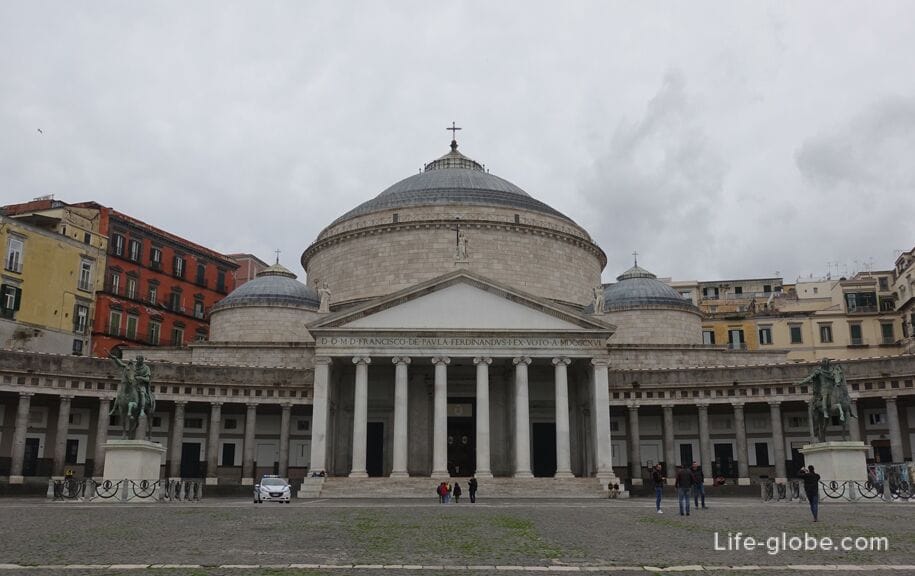
The rich interior decoration of the Church with calm tones and high columns.

Also noteworthy are the Church choir
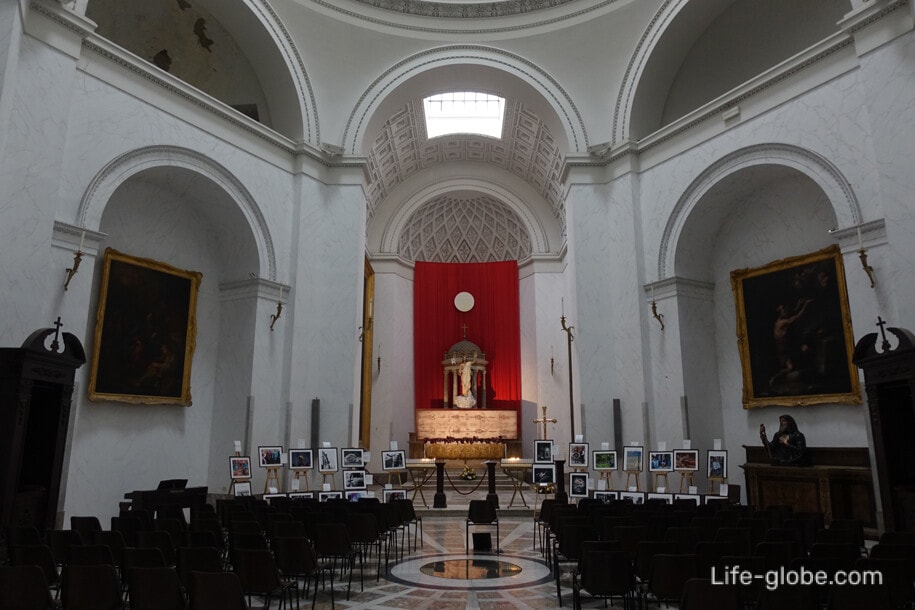
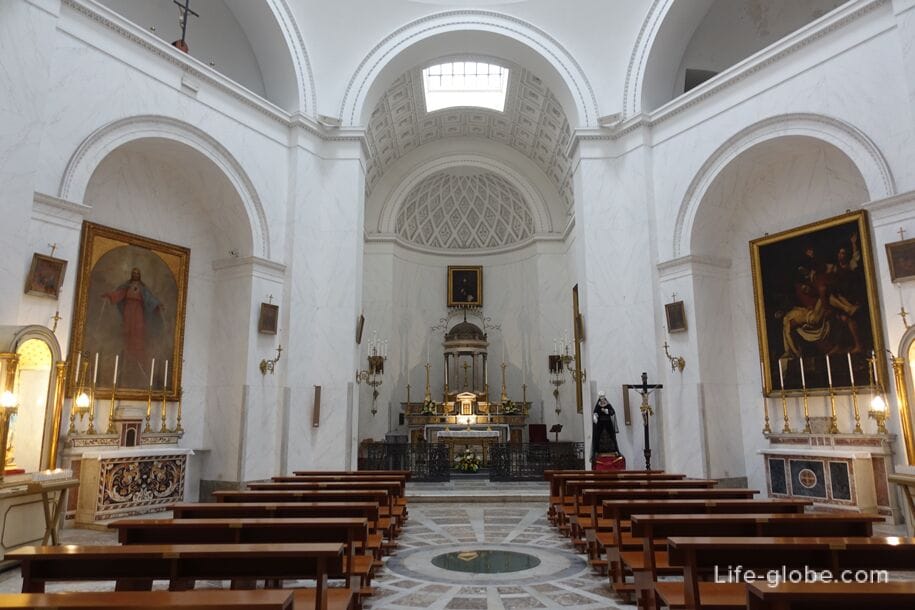
On both sides of the Church and the Palace housed two historic buildings facing each other:
Palace of Salerno (Palazzo Salerno, Palazzo Salerno), built by Francesco Sicuro project at the end of the 18th century and after several renovations, is located closer to the sea. Currently the building is the headquarters of the Southern operational command of the force;

Palace of the Prefecture (Palazzo della Prefettura - Palazzo della Prefettura), built in 1815 neoclassical architect Leopoldo Laperuta. On the ground floor is a cafe.
